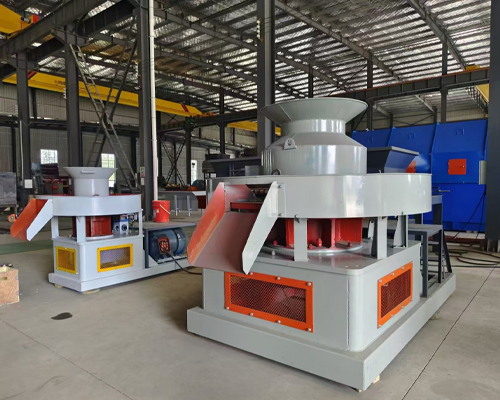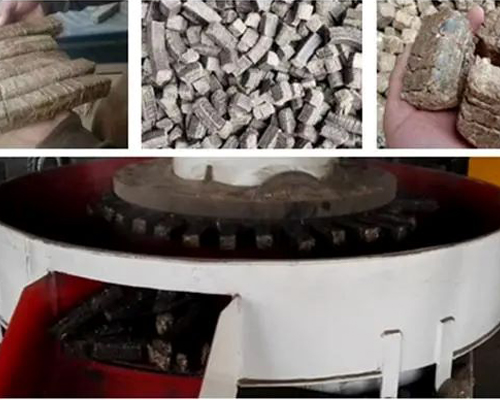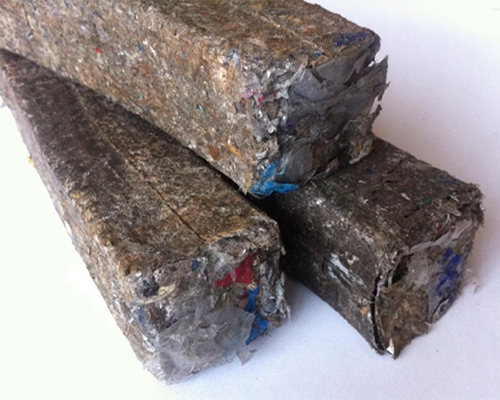High Quality Industrial Solid Waste Recycling Machine--RDF Briquetting Machine
1). RDF Rod Making Machine, it also called RDF Briquetting Machine which usually refers to mechanical equipment used to produce RDF (Refuse Derived Fuel) rods. This equipment processes municipal solid waste (MSW) or other organic waste and presses it into rod-shaped fuel with certain specifications, which is used as an alternative fuel in places such as industrial boilers or power plants. Compared with traditional fossil fuels, this fuel can reduce the impact on the environment and can effectively utilize waste resources.

2). The key components of the RDF Briquetting Machine include but are not limited to:
1. Feeding system: used to feed raw materials into the machine.
2. Crushing/grinding system: If the raw materials are not already processed, they need to be crushed or ground into a suitable size.
3. Compression molding system: This is the core part of the machine, which compresses the crushed material into rods or other shapes through high pressure.
4. Cooling system: Ensure that the pressed RDF rods can cool quickly and maintain their shape after being ejected from the mold.
5. Control system: used to monitor parameters such as temperature and pressure throughout the production process to ensure product quality.

3). When choosing an RDF Briquetting Machine, pay attention to the following points:
1. Stable performance: Ensure that the equipment remains in good working condition after long-term operation.
2. Easy operation: The easy-to-learn operation interface can improve work efficiency and reduce training costs.
3. Easy maintenance: The easy-to-maintain design can reduce downtime and improve production efficiency.
4. Customization capability: According to different raw material characteristics and the needs of the final product, the equipment should be able to be appropriately adjusted or customized.
5. After-sales service: Good after-sales service can provide support for buyers to solve problems encountered during use.

4).Working Principle:
1.Raw Material Preparation: First, the municipal solid waste is classified and pre-processed to remove unsuitable components such as metals, glass, etc.
2.Crushing and Screening: The materials suitable for conversion are mechanically crushed to a certain particle size, and oversized particles or impurities are removed by screening.
3.Mixed Tempering: Certain substances are added as needed to improve the combustion performance or other characteristics of the final product.
4.Molding: Using a special pressure molding machine, the processed materials are pressed and molded under high pressure to form RDF fuel rods with a certain shape and density.
5.Drying and curing: The newly formed RDF rods may also need to go through a drying step to reduce the moisture content and ensure their good storage stability and combustion efficiency.
5).Technical parameters:
Model | Power(KW) | Capacity(T/H) | Mold quantity | Roll quantity | Over dimension(MM) |
9JK-2600 | 75 | 1-2 | 52 | 2 | 2647*2100*1900 |
9JK-3500 | 110 | 2-3 | 72 | 2 | 3250*2600*2000 |
9JK-4500 | 132 | 3-4 | 88 | 2 | 3350*2800*2200 |
9JK-5000 | 160 | 4-5 | 100 | 2 | 3000*2300*2000 |
9JK-5500 | 160 | 4-5 | 102 | 2 | 3000*2400*2000 |
9JK-6500 | 200 | 4-5 | 120 | 3 | 4400*2970*2495 |
-
 Trommel screenTrommel screen, also known as drum screens, are widely used in various industries for sorting and separating materials.Get Quote
Trommel screenTrommel screen, also known as drum screens, are widely used in various industries for sorting and separating materials.Get Quote -
 Crop straw double shaft shreddApplications:Biomass Energy Production: Shredded straw can be used as a feedstock for bioenergy plants to produce electricity or heat.Livestock Feed: Reduced-si...Get Quote
Crop straw double shaft shreddApplications:Biomass Energy Production: Shredded straw can be used as a feedstock for bioenergy plants to produce electricity or heat.Livestock Feed: Reduced-si...Get Quote -
 Zhongcheng Air Drum SeparatorAir drum separators effectively separate lightweight materials (e.g., plastics, paper) from heavier materials (e.g., metals, glass). This high efficiency is cru...Get Quote
Zhongcheng Air Drum SeparatorAir drum separators effectively separate lightweight materials (e.g., plastics, paper) from heavier materials (e.g., metals, glass). This high efficiency is cru...Get Quote
-
2024-06-09Advantages of Using Drum Screening Machines in Waste ManagementUnderstanding the working principle of drum screening machines is essential to appreciate their efficiency and effectiveness in waste management. Operation and ...
-
2023-01-12Waste FeederWaste feeder was specially designed to optimize municipal solid waste sorting systems. The Drum Feeder ensures that your sorting system, baler or shredder has a...
-
2024-08-07Tire double shaft shredderOperation:Feeding: Whole or pre-cut tires are fed into the shredder through an inlet hopper.Shredding: As the tires enter the shredding chamber, the rotating cu...
-
2023-01-13Bag OpenerBag opener or bag opener system is a mechanical device used to automatically open and empty bags containing bulk materials. This system is commonly used in indu...
-
2024-06-11Optimize Your Waste Management Today with Our Advanced Drum ScreensUnderstanding the Mechanism and Optimization of Drum Screens for Waste Management



